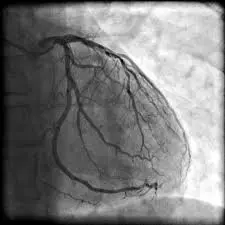Coronary angiography is a diagnostic test used to visualize the blood vessels (coronary arteries) that supply blood to the heart. It’s commonly performed to identify blockages or narrowing in the arteries, which can lead to heart conditions such as angina or heart attacks. This guide will explain what coronary angiography is, why it's performed, and what patients and healthcare providers need to know.

Coronary angiography is a type of X-ray that helps doctors see the blood flow in your heart's arteries. By injecting a special dye into your bloodstream, the doctor can see if there are any blockages that might prevent blood from flowing properly to your heart. The test is usually performed when you have symptoms like chest pain or shortness of breath, or when you have risk factors for heart disease.
Coronary angiography is a catheter-based imaging procedure that involves injecting contrast media into the coronary arteries to assess for coronary artery disease (CAD). Using fluoroscopy, real-time X-ray images are obtained, allowing visualization of arterial lumen and identifying stenoses, occlusions, or aneurysms.
Coronary angiography is often recommended when there are signs of heart disease or when your doctor suspects blockages in your coronary arteries. It helps:
Your doctor might order this test if you have symptoms like severe chest pain, shortness of breath, dizziness, or if you’ve had abnormal results on other heart tests.
Coronary angiography is indicated for diagnostic assessment and management of CAD, including:
If you experience any of the symptoms mentioned, or if you have risk factors like high cholesterol, high blood pressure, diabetes, or a family history of heart disease, consult a doctor. They may recommend initial tests, like an ECG, stress test, or echocardiogram, before deciding if a coronary angiography is necessary.
Several non-invasive tests can help evaluate heart health, though they may not offer the detail provided by coronary angiography:
The procedure involves:
Coronary angiography is a diagnostic test that uses X-ray imaging and contrast dye to visualize the coronary arteries, helping detect blockages or narrowing that may restrict blood flow to the heart.
It’s performed to diagnose coronary artery disease, evaluate symptoms like chest pain, and help doctors decide on further treatments like medications, angioplasty, or surgery.
Symptoms like chest pain (angina), shortness of breath, dizziness, abnormal heart tests, and a history of heart disease may prompt a doctor to recommend this test.
Yes, coronary angiography is often referred to as a coronary angiogram. Both terms describe the same procedure focused on the coronary arteries.
You may be advised to fast for 6-8 hours before the procedure and inform your doctor about any allergies, medications, or pre-existing conditions.
Inform your doctor of all medications you’re taking. You may need to stop certain medications temporarily before the procedure.
The procedure is generally painless. Local anesthesia is used at the insertion site, and most people feel only mild discomfort or pressure.
The procedure itself typically takes 30 minutes to an hour, but preparation and post-procedure monitoring may extend your hospital stay.
A catheter is inserted into an artery (usually in the wrist or groin) and guided to the coronary arteries. Contrast dye is injected to make the arteries visible on X-ray images.
Yes, though rare, risks include bleeding, infection, allergic reaction to the dye, arrhythmia, kidney issues, and, in very rare cases, heart attack or stroke.
Yes, patients are typically awake but may receive a mild sedative to relax. Local anesthesia is used to numb the catheter insertion site.
If it’s a diagnostic procedure, you may go home the same day, provided there are no complications. Some patients may need to stay overnight for monitoring.
Yes, coronary angiography is considered one of the most accurate tests for detecting blockages, assessing the location and severity of any artery narrowing.
Your doctor may proceed with an angioplasty (to open the artery) or place a stent during the same procedure if needed. Alternatively, they may recommend medication, lifestyle changes, or surgery.
Most people recover within 1-2 days. Avoid strenuous activities for a few days, especially if the catheter was inserted through the groin.
Yes, non-invasive alternatives include CT coronary angiography, echocardiography, and stress tests, though they may not be as detailed as traditional coronary angiography.
Yes, once cleared by your doctor, you can resume eating and drinking. Staying hydrated helps flush out the contrast dye from your body.
Yes, it’s recommended to have someone drive you home, as you may feel drowsy or tired from the sedative.
Watch for bleeding, redness, swelling, or pain at the insertion site, fever, chest pain, or difficulty breathing. Contact your doctor if any of these symptoms occur.
While repeat angiographies are possible, they are generally only done when necessary due to the risks associated with radiation exposure and contrast dye. Your doctor will determine if repeat imaging is required based on your condition.